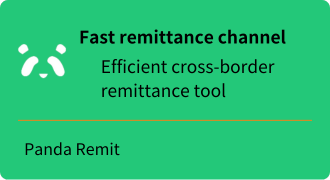U.S. stock meltdown mechanism full analysis
[DISCLAIMER] This article is for educational and informational purposes only and does not constitute investment advice. Readers should consult with qualified financial professionals before making any investment decisions.
As a professional in the field of quantitative trading and financial media, I am often asked about the various rules of the U.S. stock market. Among them, the most confusing yet crucial is the U.S. stock market's up-and-down limit rule, which is often referred to as the “meltdown mechanism”. Today, let us unveil this mysterious and critical market “safety valve”.
Imagine you are riding a high-speed roller coaster. Suddenly, the vehicle begins to accelerate out of control. In the nick of time, an automatic braking system kicks in and brings the vehicle to a steady stop. This is an excellent analogy for the U.S. stock meltdown mechanism - it acts as a “brake” in times of severe market volatility. But the question is, how does this “brake” work? Does it really protect investors? Let's begin this in-depth journey to find out!
Ⅰ. What is the U.S. stock meltdown mechanism?
The U.S. stock meltdown mechanism, known as “Circuit Breakers”, is a kind of automatic stopping measures set up to prevent the stock market from plummeting. Simply put, when the market fluctuates dramatically in a short period of time, trading will be automatically suspended, giving investors a “cooling-off period”.
The three levels of the meltdown mechanism
The U.S. stock meltdown mechanism is divided into three levels, which are triggered according to the decline of the Standard & Poor's 500 Index (S&P 500):
- Primary meltdown: a drop of up to 7%. 2.
- secondary meltdown: a drop of 13 percent
- Level 3 meltdown: up to 20% fall
Meltdown time and trading impact
- Primary and secondary meltdown: trading suspended for 15 minutes
- Tertiary meltdown: trading is suspended for the rest of the day.
It is worth noting that trading will not be suspended if a Level 1 or Level 2 meltdown is triggered within 25 minutes before the close of trading. A Level 3 meltdown is not subject to this restriction and will result in the end of trading for the day regardless of when it is triggered.
Ⅱ. Why do we need a melting mechanism?
- Control panic: To give investors a “cooling-off period” to prevent irrational decision-making due to panic.
- Protecting Market Stability: Preventing extreme market volatility and maintaining the stability of the financial system.
- Preventing Technical Failures: In some cases, meltdowns can prevent abnormal market fluctuations caused by algorithmic trading or technical failures.
Ⅲ. History and Evolution of the Meltdown Mechanism
The melting mechanism did not come out of nowhere, it is the crystallization of many years of experience in the market. 1987's “Black Monday”, the Dow Jones index plunged 22.6% in a single day, this event directly contributed to the birth of the melting mechanism. Subsequently, the melting mechanism has gone through a number of adjustments and improvements:
- 1988: the first introduction of the melting mechanism
- 2013: the trigger criteria were revised to use the S&P 500 index as the benchmark.
- 2020: During the New Crown Epidemic, the melting mechanism was triggered several times, giving full play to its role in stabilizing the market
Ⅳ. How does the meltdown mechanism affect investors?
As a quantitative trader, I am well aware that the meltdown mechanism affects different types of investors in different ways:
- Long-term investors: Usually the impact is small and can be considered as part of the market volatility.
- Day traders: need to pay close attention to the meltdown triggers and adjust their trading strategies.
- Option traders: Meltdowns may lead to sharp fluctuations in option prices, making risk management more difficult.
Case Study: Continuous Meltdown in March 2020

In March 2020, the U.S. stock market triggered four meltdowns in just 10 days due to the New Crown epidemic. Let's take a look at one of them:
On March 16, U.S. stocks fell 7% on the S&P 500 within minutes of the opening bell, triggering a Level 1 meltdown. Trading resumed after a 15-minute pause, but it was still down 12% for the day. The meltdown gave investors a chance to reassess the market, but it didn't stop the day's sharp decline.
Ⅴ. Controversy over the melting mechanism
Although the meltdown mechanism is designed to protect the market, it has some controversies:
- Potential to exacerbate panic: It has been argued that the meltdown itself may serve as a signal for panic, and instead exacerbate market volatility.
- impacts market efficiency: frequent meltdowns may interfere with the normal price discovery process.
- Unfavorable to certain trading strategies: For example, strategies relying on high-frequency trading may be exposed to greater risk during a meltdown.
Ⅵ. How to deal with meltdowns? An Investor's Guide
- Stay calm: The meltdown period is a good opportunity to reassess the market and your own positions.
- Be prepared: Add hedging instruments such as protective puts to your portfolio.
- Diversify: Don't bet all your money on a single market or asset class.
- Set Stop Losses: but be aware that in times of severe volatility, stop loss orders may be filled at much lower prices than expected.
- Follow the news: Meltdowns are usually associated with major events, and staying informed will help you make informed decisions.
Ⅶ. Conclusion
The U.S. stock meltdown mechanism is like an “airbag” for the financial markets, and it plays an important role in protecting investors and maintaining market stability. However, like any complex mechanism, it is not perfect. As investors, it is important to understand the meltdown rules, their potential impact and incorporate them into our risk management strategies to navigate this rapidly changing market.
Remember, maintaining rationality and discipline is always the key to successful investing, whether it's a headwind or a tailwind. As I have learned in quantitative trading, a systematic approach and continuous learning are the best weapons to deal with the various challenges in the market.
Have you experienced the U.S. stock meltdown? How did it affect your investment decisions? Feel free to share your experience and thoughts in the group. Let's learn and improve together!







